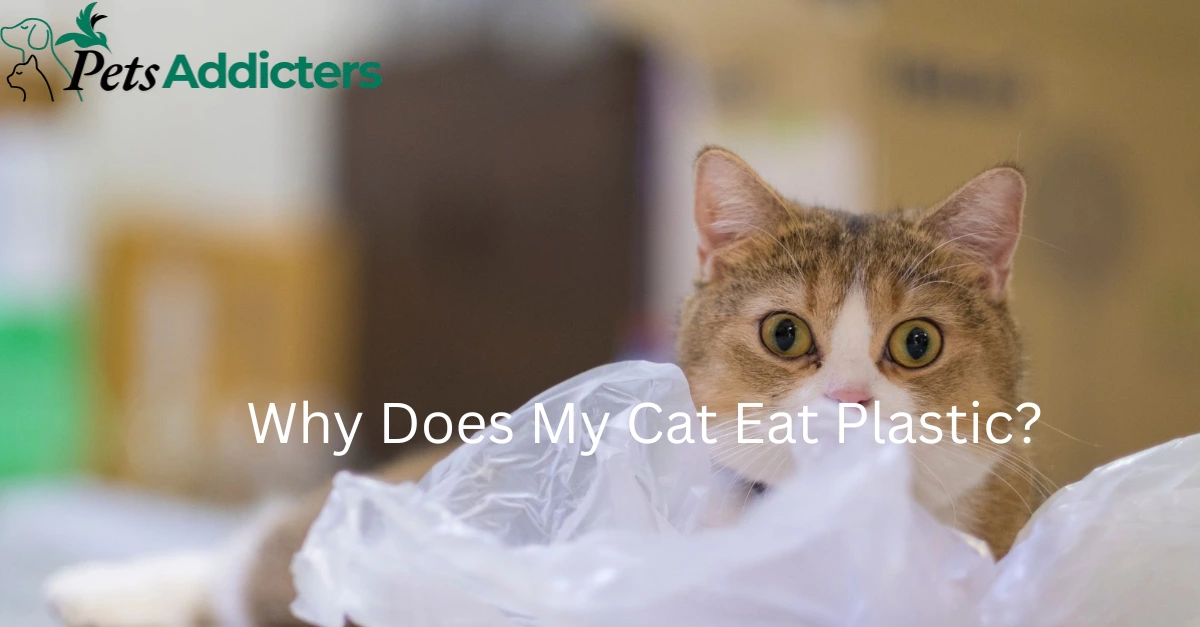why does my Cat eat plastic there are many reasons behind that If you’ve ever caught your cat chewing or licking a plastic bag, you’re not alone. Owners commonly find themselves observing cats chewing plastic by surprise and wondering if it’s curiosity or a cause for concern.
Let’s take a closer look at what could be behind this peculiar cat chewing habit and what you can do about it.
1. Curiosity & Play Behavior
Cats are naturally curious. The noise plastic bags make when they are crushed is similar to the noise prey makes in the grass bringing out their hunt response. Other cats like the feel or noise, especially when over- or understimulated and bored.However, chewing should not be followed by swallowing. Restrict plastic packaging and shopping bags from access.
2. Cat Pica – When Curiosity Turns Compulsive
If your cat is eating or chewing on non-food substances, like plastic, cloth, or paper, daily, it is pica a behavioral issue in which cats want to eat non-food substances.
Common reasons for cat pica include:
- Nutritional deficiencies
- Stress/anxiety
- Underlying medical illness
f you suspect there is pica, have your cat examined by a vet. The doctor can eliminate medical reasons and suggest how to redirect your cat’s behavior.
also read:Supplements that can increase your cat health
3. Stress and Anxiety
Changes in the environment of a cat i.e., relocation, new pets, or other unusual sounds can lead to stress. Certain cats, in turn, develop repetitive behaviors such as licking or chewing on plastic as a self-soothing behavior.
To assist your cat:
- Create a routine, calm environment.
- Provide enrichment play and toys.
- Test pheromone diffusers or calming sprays.
- Stress reduction can significantly reduce cat chewing behavior.
4. Nutrient Deficiencies or Dietary Gaps
Cats will chew plastic if they’re deficient in some nutrients or minerals. This may occur with inadequate diets or irregular feeding habits.
Having your cat’s diet inspected by your vet as a matter of course can make certain your cat is well-nourished and balanced.
Increasing enrichment like puzzle feeders or chew-proof toys also helps to redirect their chewing energy in a safe way.
5. Dental or Medical Reasons
In other instances, chewing plastic in cats is associated with dental pain, nausea, or other illness.
Painful mouth cats will chew soft items to alleviate pain.
Drooling, pawing at the mouth, or loss of appetite demands a dental examination.
6. Dangers of Plastic Consumption by Cats
Though occasional chewing appears harmless, eating plastic is harmful. It may result in:
- Intestinal blockage
- Choking hazards
- Toxic exposure (due to chemicals in plastic)
If your cat vomits, doesn’t want to eat, or becomes lethargic after being exposed to plastic — call your vet immediately.
7. How to Stop Cats from Eating Plastic
This is how to direct your cat’s chewing into a safe path:
- Take it away: Disappear plastic bags and wrappers from view.
- Offer safe alternatives: Cat chewing toys, cardboard, and rough surfaces.
- Increase stimulation: Play every day, change toys, and provide scratching posts.
- Increase feeding time: Food mazes or puzzle feeders.
With resolve, you can prevent cats from eating plastic and keep cats in good health.
When to Ask a Vet
If your cat:
- Ate plastic
- Displays appetite or energy variations
- Has diarrhea or vomiting
Get immediate vet attention. Your vet can examine for blockages or other complications from plastic bags and cats.
Is it normal for cats to chew plastic?
Occasional nibbling can be normal, but frequent chewing may signal cat pica or stress-related behavior.
Can cats get sick from eating plastic?
Yes plastic ingestion can cause choking or intestinal blockage. Contact your vet if you suspect your cat swallowed any.
Why are cats obsessed with plastic bags?
The texture, crinkling sound, and lingering food smells attract cats. Always store bags safely out of reach.
How can I stop my cat from chewing plastic?
Provide alternative chew toys, remove access, and offer interactive playtime to distract and redirect their behavior.

